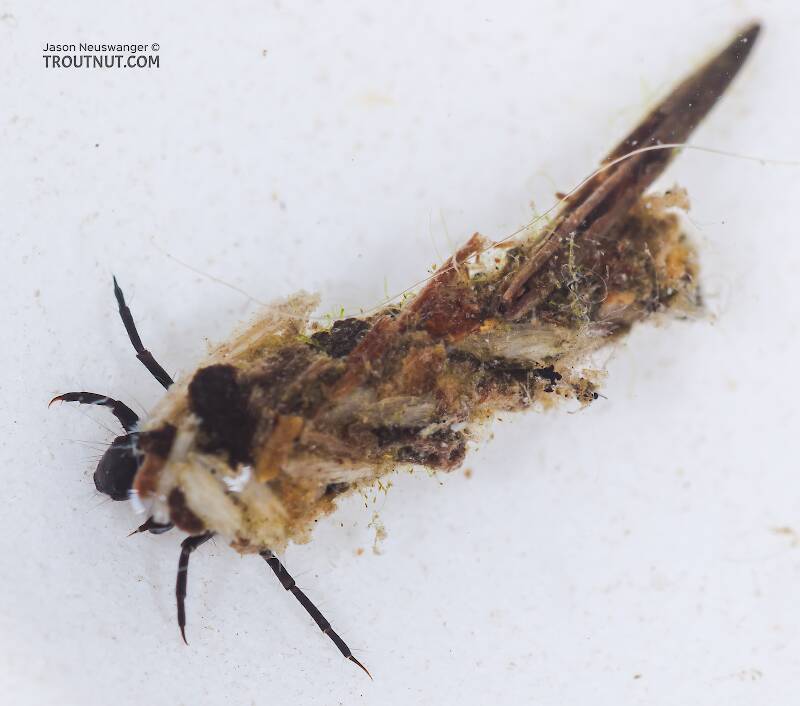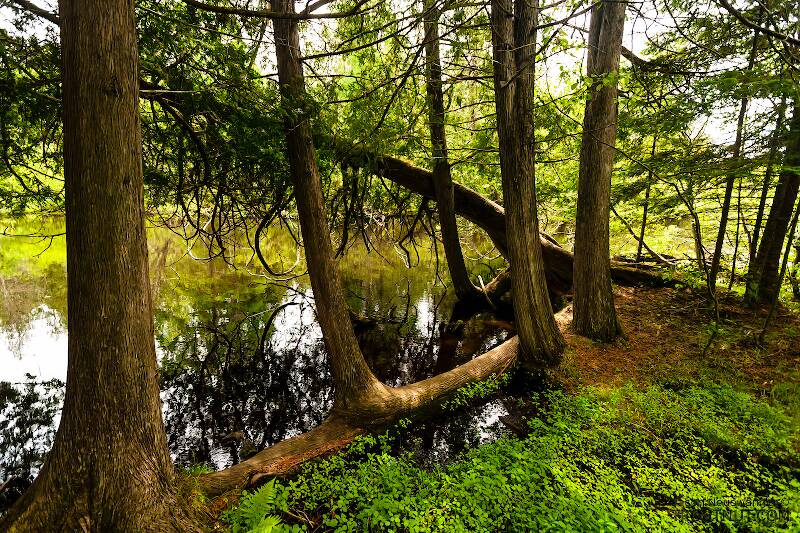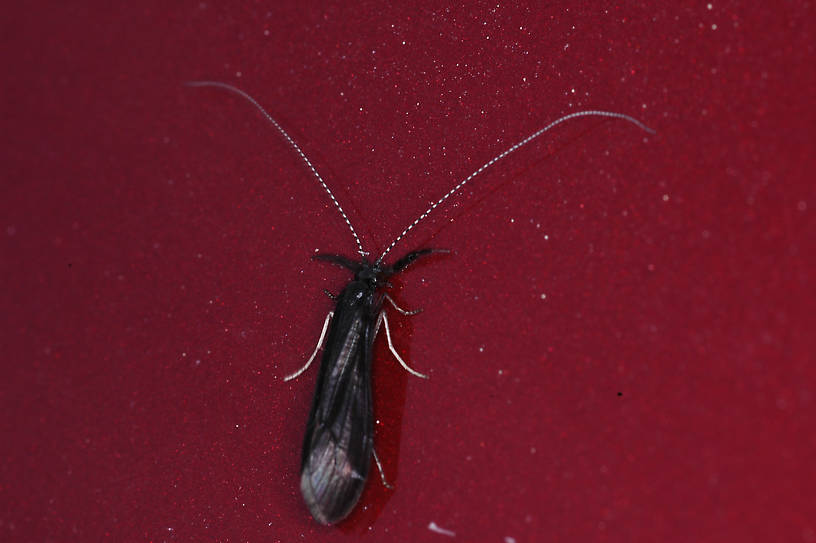
Hex Mayflies
Hexagenia limbata
The famous nocturnal Hex hatch of the Midwest (and a few other lucky locations) stirs to the surface mythically large brown trout that only touch streamers for the rest of the year.
Featured on the forum

This seems to be a young larva of Limnephilus. Although not clear in the picture, several ventral abdominal segments have chloride epithelia.

Troutnut is a project started in 2003 by salmonid ecologist Jason "Troutnut" Neuswanger to help anglers and
fly tyers unabashedly embrace the entomological side of the sport. Learn more about Troutnut or
support the project for an enhanced experience here.
Caddisfly Species Mystacides alafimbriata (Black Wing Long-Horned Sedges)
Where & when
This is the main western specis of Mystacides, and it can be very important.Species Range
Egg-Laying behavior
Time of day: Morning
Larva & pupa biology
Current speed: Slow
Substrate: Vegetation
Specimens of the Caddisfly Species Mystacides alafimbriata
1 Adult
Start a Discussion of Mystacides alafimbriata
References
- LaFontaine, Gary. 1981. Caddisflies. The Lyons Press.
- Swisher, Doug and Carl Richards. 2000. Selective Trout. The Lyons Press.
Caddisfly Species Mystacides alafimbriata (Black Wing Long-Horned Sedges)
Species Range
Common Names
Resources
- NatureServe
- Integrated Taxonomic Information System
- Global Biodiversity Information Facility
- Described by Hill-Griffin (1912)


